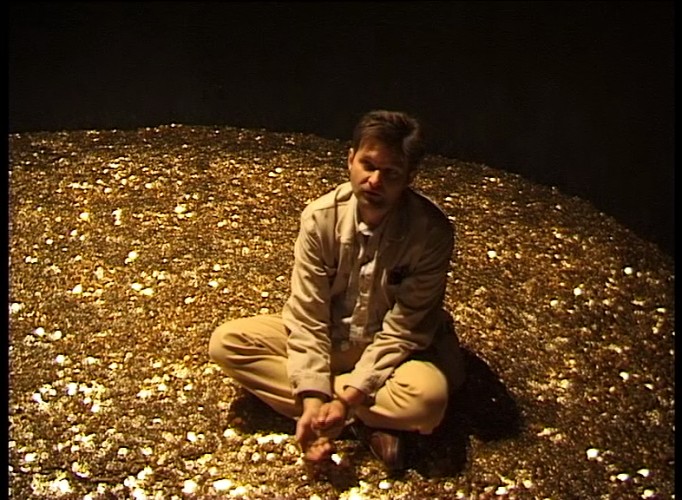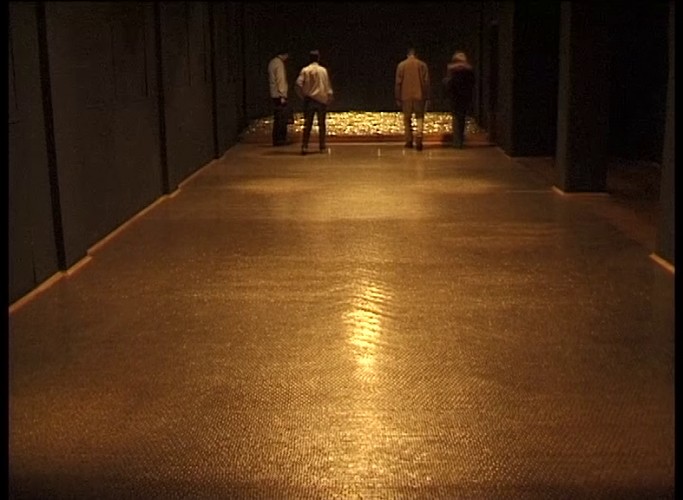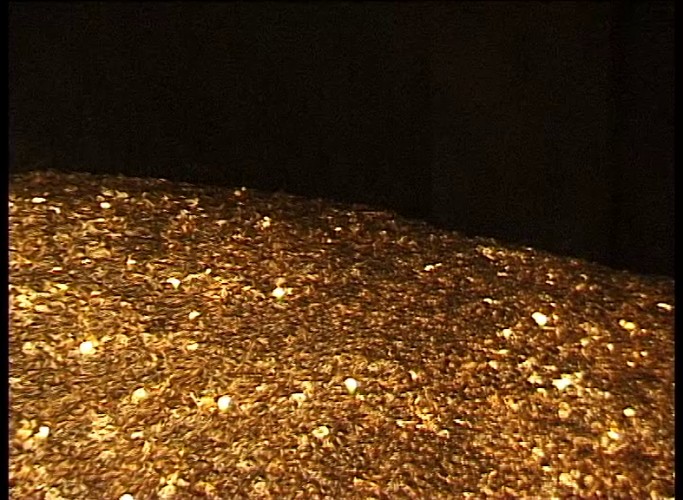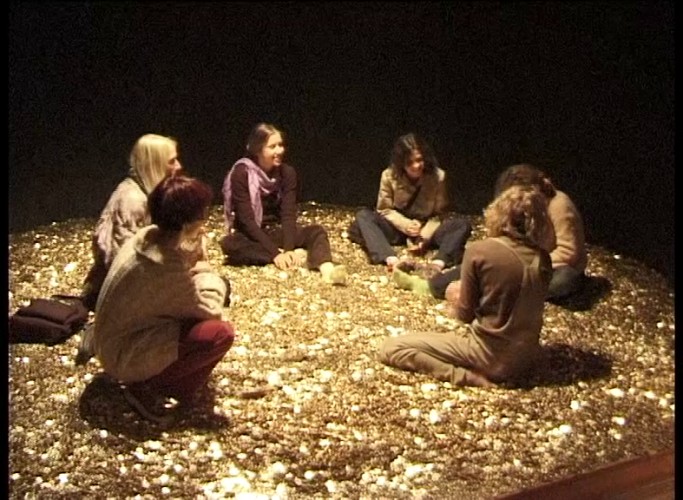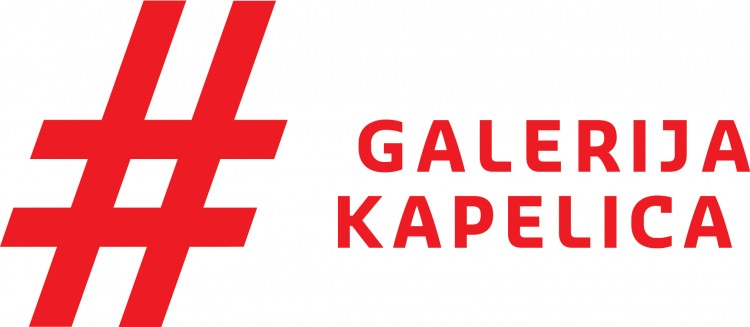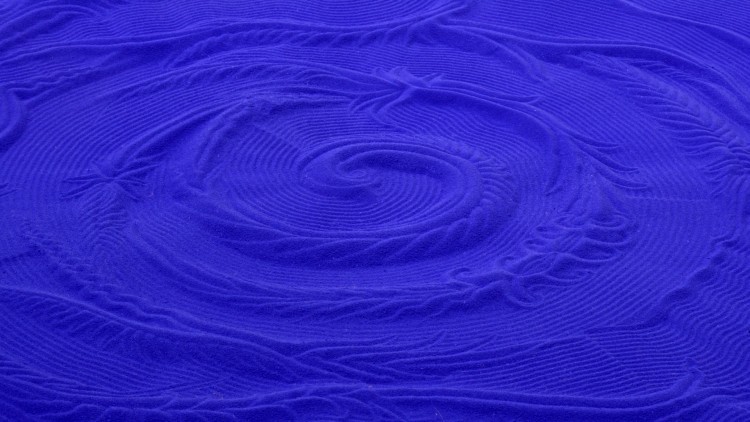The Sower project, devised by Alen Ožbolt for Kapelica Gallery, proffers at least two levels of reading: first, the installation functions as an amazing intervention in space, a complex ambient ''painting'' composed of a million one-tolar coins; right after that, however, its sensual-mental dimension is complemented by an evident symbolic effect as a consequence of a spontaneous associative reaction to something, which, in this very case, represents both the material of artistic expression and the universally negotiated substitute for the exchange of goods. The symbolic aspect of the installation is doubled by two stylised sower figures constructed by coins - a mythical, even archetypal motive from the beginning of Slovenian fine art modernism (modeled on European models, to be sure, including the French plain air as one of the most prominent references), a personification of the exceptional attitude and position of the artist, enriching his kind through his work and predicting the harvest, which will only bring profit to new generations capable of grasping its true sense and meaning. This basically romantic vision - not to say illusion - has been perpetuated, with merely diminutive modifications, up to the present day, and it actually helps to sustain the traumatic phantasm of the devaluation of artistic creativity and, first and foremost, of the incompatibility of the artist's endeavours with any kind of profitable activity. Ožbolt's Sower cuts radically through the relationship with this sort of ideological simplification and economic devaluation of the production of the surplus values exemplified in every genuine work of art. Instead of questioning how to define the relationship between art and money, or how to solve a dilemma of ''art or money'', it directly pronounces an almost blasphemous equation for the Slovenian environment, i.e. ''art IS money', as the gallery space is filled with one-tolar coins rather than the symbolic exchange values embodied in images or objects. In other words, Ožbolt's project equals one million tolars, and this million is here, before the viewers, discernible, tangible and measurable for everybody - no longer imaginary and sublimated as the value of a conventional artifact, in which one can calculate the material costs needed for its creation, including the price of the artist's work, but an artifact whose market value is actually defined by the empirically wholly unverifiable parameters that are supposed to be based on its aesthetic, emotional, spiritual features - in short, on everything but the unequivocal financial equivalent. The hypothesis that money is a measure of everything brings about a specific fetishist relationship that is often subject to sociological criticism; in its final consequence, however, this criticism remains captured within the pertinent horizon of theoretical discourse, with no impact on everyday life. A fetish as an object of desire replaces the desired thing, which seems to be unattainable; therefore, its symbolic substitutes arise all the time. In a world where everything can be bought and everyone is selling something - from body and work to ideas - we have simply ceased to offer conjecture about existence beyond the relations of exchange. At the level of the artistic act, Ožbolt's Sower equates the fetish of money with the thing itself; money is used as a substance of an aesthetic idiom, of the construction of image and intervention in space. The empirical act and theoretical conceptualisation overlap, but simultaneously they also confront us with the fact that this is a question of the subjective choice of the individual motivated primarily by aesthetic and ethical rather than economic impulses.
— Brane Kovič

